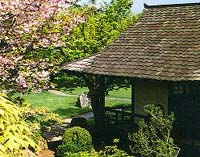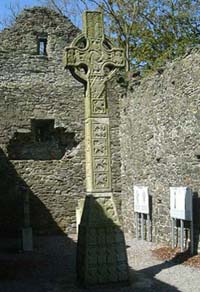Vacation Guide
Ireland golf vacation guide : To do and see
KILDARE
Donnelly’s Hollow – situated near the village of Kilcullen, this was where Ireland’s greatest 19th century bare-knuckle fighter, Dan Donnelly, fought his greatest fight against the English boxer, George Cooper. Donnelly reputedly carried the defeated Cooper up the slopes of the hollow and his giant footsteps, known as the "Steps of Strength and Fame", which were carved out by his fans, can still be seen today. Donnelly’s funeral was one of the biggest in Irish history, but in a macabre twist, his corpse was stolen and one of his arms is now mummified in a glass case in the "Hideout" pub in Kilcullen.
 Japanese Gardens – located in one corner of the National Stud complex, the gardens were built between 1906 and 1910 by the founder of the Stud, William Hall-Walker, who travelled to Japan to recruit two gardeners for his project. The gardens represent a person’s journey through life, from birth to death, but you’ll need a guide to fully appreciate their symbolism.
Japanese Gardens – located in one corner of the National Stud complex, the gardens were built between 1906 and 1910 by the founder of the Stud, William Hall-Walker, who travelled to Japan to recruit two gardeners for his project. The gardens represent a person’s journey through life, from birth to death, but you’ll need a guide to fully appreciate their symbolism.
Maynooth Castle – situated in the town of Maynooth is the 13th century Maynooth Castle. A revolt by Silken Thomas Fitzgerald was quashed at this castle when the English forces reneged on a promise of leniency and slaughtered Fitzgerald and his men. The castle itself suffered greatly at the hands of Cromwell’s forces and was abandoned in the 17th century.
 Moone High Cross – perched on a hill outside the village of Moone is the Moone High Cross. Erected in the 8th century, this 15-foot granite cross fell down and became buried in Moone Abbey churchyard. The impressive cross was restored in 1835, while its engravings record scenes from the Bible.
Moone High Cross – perched on a hill outside the village of Moone is the Moone High Cross. Erected in the 8th century, this 15-foot granite cross fell down and became buried in Moone Abbey churchyard. The impressive cross was restored in 1835, while its engravings record scenes from the Bible.
Motte of Ardscull – lying just outside Athy, folklore has it that this mound is home to the fairies. Historically though, it was developed by the Normans for the superior position it commands of the surrounding lowlands. The motte, a large oval mound up to 35 feet high, is surrounded by a ditch and rampart, while its plantation of trees was laid down in the 19th century.
National Stud – situated a mile from Kildare Town, this is certainly the most important bloodstock exhibit in the country. Established in 1900 as a centre for excellent breeding standards, visitors can potter about this well-maintained equestrian complex, visit a small museum and learn a little about horse husbandry.
Rath of Mullaghmast – situated between Ardscull and Crookstown, a number of earthworks, ring-forts and a standing stone can be seen here. The scene of a massacre by one family over its enemies in the 16th century, in 1843, Daniel O’Connell, known as "The Liberator", staged one of his last meetings here, aimed at the repeal of the Act of Union.
St. Brigid’s Cathedral & Round Tower – standing close to Kildare’s town square, the cathedral dates from the 13th century, while the round tower dates back to the 9th century. According to legend, when St. Brigid asked the ruling chieftain for land on which to build her convent in the 6th century, he said he would grant her as much land as her cloak would cover. When she spread her cloak on the ground, it spread out and grew until it covered many acres. The cathedral in fact was built on the site of this convent.



